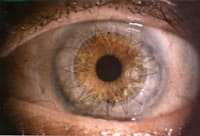Corneal Transplant

The cornea is the clear window over the front of the eye and serves as the eye’s most powerful focusing lens. Two thirds of the eye’s ability to focus light resides within the cornea. The cornea is the only transparent tissue in the body, so light is able to freely enter the eye. Damage to the cornea can cause a loss of transparency and may result in the need for a corneal transplant. Corneal transplantation is the preferred treatment for patients with stretching of the cornea, or other severe corneal diseases.
Damage to the cornea may arise from various conditions such as:
- hereditary issues
- blunt trauma
- chemical burns
- bacterial infections
- viruses
Conditions that may require a patient to seek a cornea transplant include:
- clouding of the cornea
- keratoconus
- Fuchs’ Dystrophy
- irregular corneal surface tissue growths
- corneal scarring due to infection or trauma
Because the cornea is such an important part of your visual system, please make sure to contact a qualified ophthalmologist if you think you might have damaged your cornea. A damaged cornea requires special attention by our corneal specialist. Often times we can start treating the cornea with medication. If your vision cannot be accurately corrected with medications, eyeglasses or contact lenses, a corneal transplant may be required.
What is a corneal transplant?
A corneal transplant, also known as a penetrating keratoplasty, or as a corneal graft, involves the removal of the central portion (also known as a button) of the diseased cornea and replacing it with a donor button of cornea. Corneal transplants are performed on patients with damaged or scarred corneas that prevent acceptable vision. This may be due to corneal scarring from disease or trauma.
A common indication for keratoplasty is keratoconus. The eye-care practitioner must decide when to recommend keratoplasty for the keratoconic patient. This is often not a simple, straight-forward decision. Keratoplasty for keratoconus is highly successful; however, there is a long recovery period and a risk of severe ocular complications. A number of factors must be considered in deciding when to do a keratoplasty. One of the most important is the patient’s functional vision. If the best acuity with their contact lenses prevents them from doing their job or carrying out their normal activities, a transplant must be considered. Very careful and specialized contact lens fittings are necessary before recommending a corneal transplant. Some patients could be successfully fit with contact lenses if special lens designs were used. Thus, prior to transplant, every effort should be made to optimally fit the patient with contact lenses, especially if there is not significant corneal scarring affecting vision. However, a few patients become intolerant to contact lenses, and require a transplant earlier than otherwise would be necessary.
If the patient has a large area of thinning, a very decentered cone, or significant blood vessel growth into the usually clear cornea, a transplant may be performed earlier than otherwise indicated by the visual performance, as these factors may require a larger than normal transplant button size and/or increase the chance of rejection if allowed to advance too far. It is important to realize that a transplant does not necessarily guarantee freedom from contact lenses, as they are often required for resulting refractive errors and astigmatism.
Healing after a Cornea Transplant
The healing process following transplant is long, often taking a year or longer. The time from surgery to the removal of the stitches is commonly 6 to 17 months. Initially following surgery the donor button is swollen and even following healing, the button is usually thicker than the corneal bed in which it rests. The patient may be on steroids for months. Graft rejection reactions occur in 11% to 18% of the patients and are reported to occur from 1 month to 5 years following surgery.
Symptoms of graft rejection include:
- redness
- light sensitivity
- pain or blurry vision
Usually, the reaction is overcome and the graft remains clear. Over 90% of the corneal grafts are successful with some studies reporting 97% to 99% success rates at 5 and 10 years. Large amounts of astigmatism are common following keratoplasty.
Corneal Transplants can provide the gift of sight with less dependence on eyeglasses or contact lenses to people who have for years struggled with little or no vision. Morristown Ophthalmology Associates, P.A provides state-of-the-art technology in corneal transplantation.





